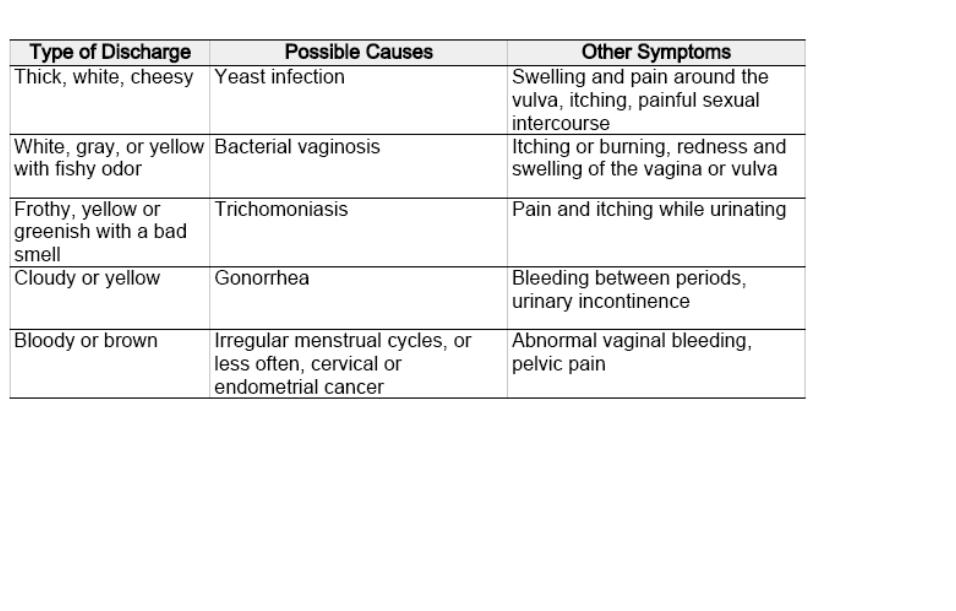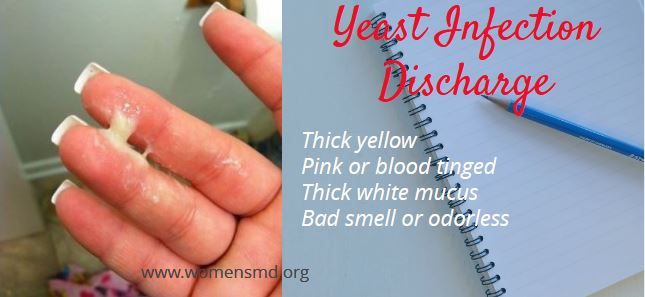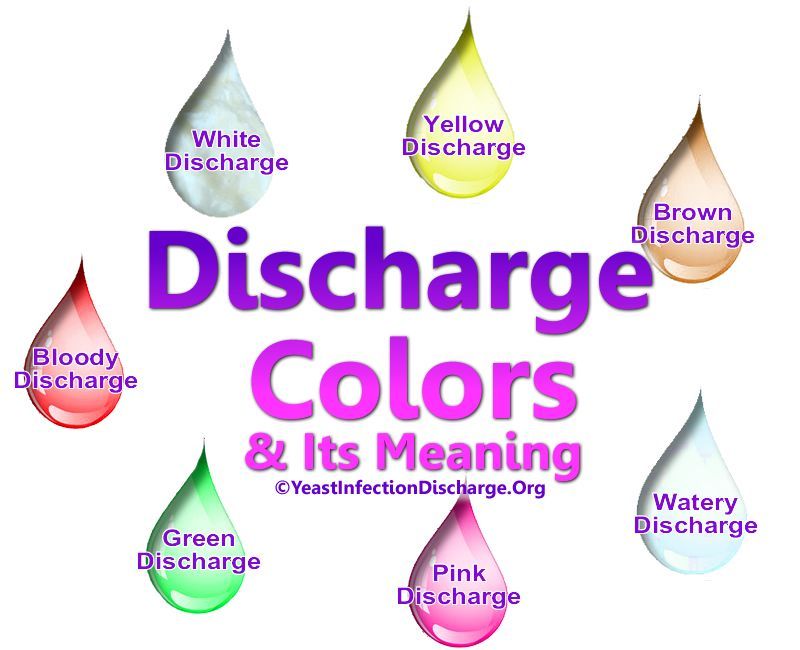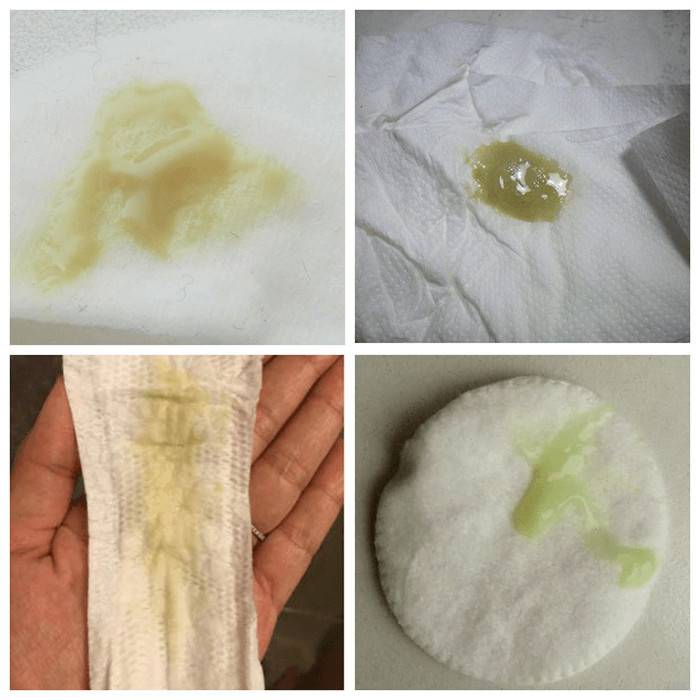White Yellow Discharge with Odor: Causes, Types, and Treatment Options
What are the common causes of white and yellow vaginal discharge. How to differentiate between normal and abnormal discharge. When should you seek medical attention for vaginal discharge. What are the treatment options for various types of vaginal infections.
Understanding Vaginal Discharge: Normal vs. Abnormal
Vaginal discharge is a common and natural occurrence in women of reproductive age. It plays a crucial role in maintaining vaginal health by keeping the area clean, providing lubrication, and potentially preventing infections. However, changes in the color, consistency, or odor of vaginal discharge can sometimes indicate an underlying health issue.
Normal vaginal discharge is typically clear or white and may vary in consistency throughout the menstrual cycle. It is usually odorless or has a mild, non-offensive scent. On the other hand, abnormal discharge may be yellow, green, or gray in color, have a strong or unpleasant odor, and be accompanied by other symptoms such as itching, burning, or pain.

What factors can affect vaginal discharge?
- Hormonal changes during the menstrual cycle
- Pregnancy
- Sexual activity
- Use of birth control methods
- Infections (bacterial, fungal, or sexually transmitted)
- Certain medications
- Stress and lifestyle factors
White Vaginal Discharge: Causes and Implications
White vaginal discharge is often considered normal, especially when it occurs during ovulation or just before menstruation. However, certain characteristics of white discharge may indicate an infection or other health concerns.
Is white discharge always normal?
Not necessarily. While white discharge can be a sign of normal vaginal health, certain changes in its consistency or accompanying symptoms may suggest an underlying issue. For instance, thick, clumpy white discharge resembling cottage cheese, often accompanied by itching and burning, could be a sign of a yeast infection caused by an overgrowth of Candida fungi.
What does it mean if white discharge has a strong odor?
If you notice thin, white discharge with a strong fishy odor, it could be a sign of bacterial vaginosis (BV). BV is the most common vaginal infection in women aged 15-44 and may also cause symptoms like burning during urination and vaginal itching. It’s important to consult a healthcare provider if you experience these symptoms, as BV requires proper treatment to prevent complications.

Yellow Vaginal Discharge: When to Be Concerned
Yellow vaginal discharge can be a bit more concerning than white discharge, although it doesn’t always indicate a problem. The key is to pay attention to other characteristics of the discharge and any accompanying symptoms.
Can yellow discharge be normal?
In some cases, yes. Pale yellow discharge that is odorless and not accompanied by other symptoms may not be a cause for concern. However, it’s always best to monitor any changes in your vaginal discharge and consult a healthcare provider if you’re unsure.
What infections can cause yellow discharge?
Yellow discharge, especially when accompanied by other symptoms, can be a sign of various infections:
- Trichomoniasis: This sexually transmitted infection (STI) may cause yellow-green discharge with an unpleasant odor, along with itching and pain during urination.
- Chlamydia: Another STI that can cause yellow discharge, although it often doesn’t present any symptoms.
- Gonorrhea: This bacterial STI can lead to yellow or green discharge, often with a strong odor.
Clear Vaginal Discharge: What It Means
Clear vaginal discharge is typically considered normal and healthy. However, the amount and consistency of clear discharge can vary throughout the menstrual cycle and between individuals.

How does clear discharge change during the menstrual cycle?
During ovulation, clear discharge may become more abundant and take on a stretchy, egg white-like consistency. This change in discharge helps facilitate the movement of sperm through the cervix, increasing the chances of fertilization.
Can clear discharge indicate fertility?
Yes, the presence of clear, stretchy discharge around the middle of your menstrual cycle can be a sign of ovulation. Some women use this as a natural method of tracking their fertile window, although it’s not always a reliable indicator on its own.
Preventing Abnormal Vaginal Discharge
While normal vaginal discharge doesn’t need to be prevented, there are several steps you can take to maintain vaginal health and reduce the risk of infections that may lead to abnormal discharge:
- Avoid douching, as it can disrupt the natural balance of bacteria in the vagina
- Wear cotton underwear to allow for better air circulation
- Practice safe sex by using condoms and getting regular STI screenings
- Use unscented personal hygiene products to avoid irritation
- Maintain good overall hygiene, but avoid using harsh soaps in the vaginal area
- Wipe from front to back after using the bathroom to prevent the spread of bacteria
When to Seek Medical Attention for Vaginal Discharge
While some variations in vaginal discharge are normal, certain changes or accompanying symptoms warrant a visit to a healthcare provider. It’s important to seek medical attention if you experience any of the following:

- Green, yellow, or gray discharge
- Frothy or foamy discharge
- Discharge with a strong, unpleasant odor
- Vaginal itching, burning, or irritation
- Pain during urination or sexual intercourse
- Pelvic pain or discomfort
- Unusual bleeding or spotting between periods
How do doctors diagnose the cause of abnormal discharge?
To determine the cause of abnormal vaginal discharge, healthcare providers may:
- Take a detailed medical history, including information about sexual activity and menstrual cycle
- Perform a physical examination, including a pelvic exam
- Collect samples of the discharge for laboratory testing
- Order additional tests, such as STI screenings or cultures, if necessary
Treatment Options for Abnormal Vaginal Discharge
The treatment for abnormal vaginal discharge depends on the underlying cause. Here are some common treatment approaches:
How are yeast infections treated?
Yeast infections are typically treated with antifungal medications, which can be prescribed by a healthcare provider or purchased over-the-counter. These may include:
- Oral antifungal medications (e.g., fluconazole)
- Topical antifungal creams or suppositories
- Combination treatments for severe or recurrent infections

What is the treatment for bacterial vaginosis?
Bacterial vaginosis is usually treated with antibiotics, which may be prescribed as:
- Oral medications (e.g., metronidazole, clindamycin)
- Vaginal gels or creams
It’s important to complete the full course of treatment, even if symptoms improve, to prevent recurrence.
How are sexually transmitted infections managed?
Treatment for STIs varies depending on the specific infection:
- Trichomoniasis: Usually treated with a single dose of antibiotics (e.g., metronidazole or tinidazole)
- Chlamydia: Typically treated with antibiotics such as azithromycin or doxycycline
- Gonorrhea: Often requires a combination of antibiotics due to increasing antibiotic resistance
It’s crucial to inform sexual partners about the infection so they can also seek treatment and prevent reinfection.
Long-term Vaginal Health: Tips and Considerations
Maintaining long-term vaginal health is essential for overall well-being and can help prevent recurrent issues with abnormal discharge. Here are some tips to promote vaginal health:

How can you maintain a healthy vaginal pH?
The vagina naturally maintains an acidic pH, which helps prevent the overgrowth of harmful bacteria. To support this natural balance:
- Avoid using harsh soaps or douches in the vaginal area
- Opt for pH-balanced intimate hygiene products when necessary
- Consider taking probiotics to support healthy vaginal flora
- Stay hydrated and maintain a balanced diet rich in fruits and vegetables
Can lifestyle factors affect vaginal health?
Yes, several lifestyle factors can impact vaginal health:
- Stress management: Chronic stress can affect hormone levels and immune function, potentially impacting vaginal health
- Sleep: Adequate sleep is crucial for maintaining a strong immune system
- Exercise: Regular physical activity can help boost overall health and immune function
- Smoking cessation: Smoking can increase the risk of certain vaginal infections
- Balanced diet: A nutritious diet supports overall health, including vaginal health
What role does hormonal balance play in vaginal health?
Hormones, particularly estrogen, play a significant role in maintaining vaginal health. Hormonal changes due to menstrual cycles, pregnancy, breastfeeding, or menopause can affect vaginal discharge and overall vaginal health. If you’re experiencing persistent issues related to hormonal changes, consider discussing hormone therapy or other treatment options with your healthcare provider.

Understanding the various types of vaginal discharge and their potential causes is crucial for maintaining optimal reproductive health. While some variations in discharge are normal and even indicative of a healthy vaginal environment, it’s important to be aware of changes that may signal an underlying issue. By practicing good hygiene, maintaining a healthy lifestyle, and seeking prompt medical attention when necessary, you can support long-term vaginal health and overall well-being.
Remember, every woman’s body is unique, and what’s normal for one person may not be for another. If you’re ever unsure about changes in your vaginal discharge or experience persistent symptoms, don’t hesitate to consult with a healthcare professional. They can provide personalized advice and treatment options tailored to your specific situation, ensuring that you maintain optimal vaginal health throughout the various stages of your life.
Causes of white, yellow, and clear discharge
Vaginal discharge is typically white or clear, and may be thick or thin in texture. Healthy discharge can dry yellow, but if it has an odor, it may be a sign of infection.
Vaginal discharge is fluid that contains a mix of vaginal secretions and cervical mucus. The amount of vaginal discharge produced varies from person to person.
Pregnancy, changing hormones, or the presence of an infection can affect the consistency and amount of vaginal discharge.
Vaginal discharge has several functions. It naturally keeps the vagina clean, provides lubrication during sexual intercourse, and may help prevent infection.
Share on PinterestVaginal discharge may change in appearance during the menstrual cycle.
Vaginal discharge can be abnormal or normal. In many cases, it does not signify a problem.
Normal vaginal discharge is clear, may be thick or thin, and is usually odorless. The amount produced and the consistency may change at different times during a woman’s monthly menstrual cycle.
For instance, discharge may become heavier, thicker, and more noticeable when a woman is ovulating. It may also be white at this time.
The amount of discharge may also change due to sexual activity and the use of birth control.
There are different types of vaginal discharge based on consistency and color. Changes in the color, amount, or smell of vaginal discharge may indicate a problem.
In some cases, it is difficult to make a diagnosis based on vaginal discharge alone. Other symptoms such as burning, itchiness, or irritation are often a better indication of a problem.
Below are different types of vaginal discharge and their possible causes.
White
Different shades of white discharge may be normal, especially if it occurs during ovulation or just before a woman’s period. As long as there is no vaginal itching, burning, or unusual smell accompanying the discharge, there is probably no underlying issue.
But in other instances, white vaginal discharge could be a sign of an infection. If the discharge is clumpy and looks similar to cottage cheese, it may be due to a yeast infection.
If the discharge is clumpy and looks similar to cottage cheese, it may be due to a yeast infection.
A yeast infection may also cause vaginal itching and burning. It occurs due to an overgrowth of a type of fungus called Candida.
Thin, white vaginal discharge that has a strong fishy odor may indicate bacterial vaginosis (BV). BV is the most common vaginal infection in women between 15 and 44. Other symptoms may include burning on urination and vaginal itching.
Yellow
Yellow discharge may or may not indicate an infection. If the discharge is a pale yellow, odorless, and not accompanied by other symptoms, it may not be a cause for concern.
In other instances, yellow discharge can be a sign of a sexually transmitted infection (STI) or a bacterial infection.
Causes of yellow discharge include:
- Trichomoniasis, which may also cause itching, pain during urination, and an unpleasant odor.
- Chlamydia, which often does not have any symptoms.

Clear
Clear vaginal discharge is typically normal. However, the amount may vary during a woman’s monthly menstrual cycle and between individuals.
For instance, clear discharge may be stretchy and have an egg white consistency around the time of ovulation.
Normal vaginal discharge does not need to be prevented. However, taking the following precautions can sometimes prevent abnormal discharge:
- Avoid douching, which can destroy the good bacteria that help prevent vaginal infections.
- Wear cotton underwear, which absorbs moisture and may prevent a yeast infection.
- Practice safe sex by using a condom, limiting the number of sexual partners, and getting tested regularly for STIs.
- Use unscented soaps, tampons, and pads. Scented or strong products may disrupt the natural balance of bacteria in the vagina, which can increase the risk of infection.
Share on PinterestAbnormal discharge may be a sign of infection and may require medical attention.
Vaginal discharge is often nothing to be concerned about, but there are times when changes in discharge can indicate a problem.
Different types of infections can have similar symptoms, but they are treated differently. It is essential to see a doctor if any of the following develops:
- green, yellow, or gray discharge
- vaginal itching or burning
- discharge that is frothy, foamy, or looks like cottage cheese
- a fishy or unpleasant odor
- pelvic pain
To determine the cause of abnormal discharge, the doctor may ask about any additional symptoms, a person’s general health, and their sexual history.
Treatment for the underlying cause of abnormal vaginal discharge will vary and may include antibiotics or antifungal medication.
Vaginal discharge is often normal, but there are instances when the color, amount, or consistency of discharge may indicate a problem.
Yeast infections, STIs, and BV can all lead to a change in vaginal discharge. In most cases, causes of abnormal vaginal discharge can be treated successfully.
In most cases, causes of abnormal vaginal discharge can be treated successfully.
Read this article in Spanish.
Causes, Treatments, and Concerns- K Health
It’s normal for women to experience vaginal discharge, or fluid secretions from the glands of the cervix. And though vaginal discharge often changes throughout a person’s menstrual cycle, some changes may indicate a health problem.
For example, yellow malodorous vaginal discharge can be a sign of a bacterial infection or a sexually transmitted infection (STI). If you’re concerned about your vaginal discharge, contact your healthcare provider.
In the meantime, read on to learn about yellow vaginal discharge. I’ll start with the causes and explain what normal vaginal discharge is like. Then I’ll share how to prevent yellow discharge and when to see a doctor.
Yellow Vaginal Discharge Causes
Vaginal discharge can have textures and colors. Yellow or green vaginal discharge most commonly occurs with infections, including sexually transmitted infections..jpg)
Vaginal discharge accompanied by other symptoms may help you or your healthcare provider determine your current diagnosis.
Talk to a doctor today.
Start my visit
Common causes of yellow discharge
- Bacterial vaginosis: One of the most common causes of yellow vaginal discharge is an infection called bacterial vaginosis (BV), which is thought to be caused by a disruption of vaginal flora. BV usually causes excessive, fishy-smelling discharge and rarely itching. If left untreated when pregnant, it can result in pregnancy complications.
- Trichomoniasis: Long for “trich,” trichomoniasis is an STI that spreads by unprotected sex with an infected person. It commonly causes greenish-yellow discharge that smells musty and appears frothy. Trichomoniasis can also cause pregnancy complications if untreated in pregnancy.
- Gonorrhea: Another sexually transmitted infection, gonorrhea can cause yellow or greenish discharge.
 People with gonorrhea typically experience increased discharge, painful urination, vaginal bleeding between periods, and pelvic or abdominal pain. Gonorrhea discharge may smell foul.
People with gonorrhea typically experience increased discharge, painful urination, vaginal bleeding between periods, and pelvic or abdominal pain. Gonorrhea discharge may smell foul. - Chlamydia: This STI can also result in smelly, yellow discharge accompanied by painful urination, painful sex, and bleeding between periods.
More serious concerns
Bacterial infections, including STIs, are often treatable. However, they can result in serious complications, so seek prompt medical treatment if you think you may have an infection.
For example, infections that cause yellow discharge can increase your risk of pelvic inflammatory disease. Left untreated, PID can lead to fertility complications, and in some cases may be life threatening requiring hospitalization and IV antibiotics.
If you’re pregnant, if left untreated, bacterial vaginosis or STIs can result in pregnancy complications such as preterm labor.
What Is Normal Discharge Like?
Vaginal discharge can change consistency throughout the menstrual cycle. Typically, healthy vaginal discharge is clear or white.
Typically, healthy vaginal discharge is clear or white.
Close to your period, discharge may have a pink or reddish hue. Normal discharge that appears in your underwear and is exposed to air can also turn yellow, which isn’t necessarily cause for concern.
Darker yellow or greenish vaginal discharge, on the other hand, is more likely a sign of an infection that should be addressed by a medical provider.
Different Possible Colors and Their Meanings
Certain times or conditions can cause different colored vaginal discharge. Below are some of the most common colors of vaginal discharge and what they may mean.
- Clear: Clear discharge is typically healthy. You may have clear discharge if you’re pregnant or ovulating. Sexual arousal can also cause clear discharge.
- White: White discharge can be normal. But if it’s thick, like cottage cheese, and accompanied by itching or burning, white discharge may indicate a yeast infection.

- Gray: Gray vaginal discharge is often associated with infection, sometimes an STI and more commonly bacterial vaginosis.
- Pink or red: Pink or reddish discharge may occur in the days leading up to a person’s period. It can also occur with implantation bleeding, or bleeding that occurs when a fertilized egg attaches to the uterus leading to early pregnancy. Another cause is an irritated or inflamed cervix. In rare cases, red discharge can be a sign of cervical infection or cancer.
- Brown: Vaginal discharge may turn brown in the presence of blood, so it can occur during or before your period. Brown vaginal discharge could also be a sign of a vaginal infection or, in rare cases, a retained foreign object such as a tampon.
- Yellow: Yellow discharge is most commonly associated with bacterial vaginosis or a sexually transmitted infection such as chlamydia.
 .
. - Green: As with yellow, green-colored discharge usually happens with an infection, including sexually transmitted infections.
How to Prevent Yellow Discharge
To prevent sexually transmitted infections associated with yellow vaginal discharge, always use condoms when you have sex of any kind, especially with a new partner.
Latex or polyurethane condoms can reduce the risk of infection but not completely prevent it. If possible, limit your number of sex partners to reduce your risk of sexually transmitted infection.
Regular STI screening can also help prevent the risk of more serious medical problems. It may not be possible to completely prevent bacterial vaginosis as this is the overgrowth of your natural vaginal flora that sometimes causes symptoms.
Some people experience it due to a natural lack of healthy bacteria in their vagina. Douching is associated with a higher risk of bacterial vaginosis, so avoid using scented wipes, washes or products in the vaginal area.
Talk to a doctor today.
Start my visit
When to See a Doctor
See a healthcare provider anytime you’re concerned about the color or texture of your vaginal discharge, particularly if you are pregnant or suspect a vaginal or sexually transmitted infection.
Also contact your doctor if you have an infection or suspect an infection and experience:
- Fever
- Chills
- Fatigue
- Weakness
- Nausea and vomiting
These could indicate a worsening or spreading infection, which requires immediate medical treatment.
Infections that cause yellow vaginal discharge are usually bacterial, so they may be treated with antibiotics. Your doctor can determine the best course of treatment for you, depending on your medical history, symptoms, and diagnosis.
How K Health Can Help
Did you know you can get affordable primary care with the K Health app?
Download K to check your symptoms, explore conditions and treatments, and if needed text with a doctor in minutes.
Frequently Asked Questions
What does it mean when you have a yellowish discharge?
Yellow discharge is commonly associated with a vaginal infection called bacterial vaginosis. Sexually transmitted infections, or STIs, can also cause yellow or green discharge. If you’re concerned about a change in your vaginal discharge, see a medical provider.
Is a light yellow discharge normal?
Vaginal discharge varies from person to person, and not all changes indicate a medical problem. Clear, white, or even light yellow discharge can be healthy and normal. If you have yellow, green, or gray discharge, consult a healthcare provider. It’s possible you have an infection or another health condition that should be treated.
K Health articles are all written and reviewed by MDs, PhDs, NPs, or PharmDs and are for informational purposes only. This information does not constitute and should not be relied on for professional medical advice. Always talk to your doctor about the risks and benefits of any treatment.
K Health has strict sourcing guidelines and relies on peer-reviewed studies, academic research institutions,
and medical associations. We avoid using tertiary references.
Abnormal Vaginal Discharge. (n.d.).
https://www.chop.edu/conditions-diseases/vaginitisVaginal Discharge.
 (1990).
(1990).
https://www.ncbi.nlm.nih.gov/books/NBK281/Vaginal Discharge. (2007).
https://www.ncbi.nlm.nih.gov/pmc/articles/PMC2099568/Vaginal Itching and Discharge: Adult and Adolescent.
 (2021).
(2021).
https://medlineplus.gov/ency/article/003158.htm
Yellow vaginal discharge in women | Discharges with odor and without yellowish color
Medical expert – Lysenko Oksana Borisovna.
Editor and medical expert – Harutyunyan Mariam Harutyunovna.
Number of views: 1,144,138
Date last updated: 03/25/2022
Average read time: 3 minutes
90 002 Types of yellow discharge
Possible causes of heavy yellow discharge
What to do if yellow discharge appears during urination time, redness of the mucosa). Beli cleanse the genital tract from dead epithelium and microorganisms, maintain normal microbiocenosis of the vagina. But a change in the color of natural secretions can indicate various disorders in the body, including infectious and inflammatory processes and sexually transmitted diseases.
But a change in the color of natural secretions can indicate various disorders in the body, including infectious and inflammatory processes and sexually transmitted diseases.
Types of yellow discharge
Slightly odorless or with it . Moderate slightly yellow discharge in women, not accompanied by redness of the vulva, itching and burning, can be considered normal. The intermenstrual leucorrhea is actually light, but on a panty liner it has a slightly yellowish tinge. Slight, yellow, odorless discharge in women increases slightly in the middle of the cycle (during ovulation) and a few days before menstruation. During this period, it is necessary to carefully monitor the quality of personal hygiene, use thin daily.
Abundant with or without bad odor . Such secretions indicate the development of an inflammatory process in the organs of the reproductive system. A woman may complain of burning, itching in the vulva and other unpleasant symptoms. The discharge may have a strong odor and a yellowish-green tint.
The discharge may have a strong odor and a yellowish-green tint.
Possible causes of heavy yellow discharge
Vaginosis . The disease usually occurs in women of reproductive age. The disease is based on a non-inflammatory process, in which the number of representatives of the lactoflora decreases and the number of anaerobic microorganisms increases. Vaginosis can occur with little or no symptoms. A characteristic symptom is an unpleasant yellow discharge from the vagina with a fishy odor.
Colpitis . The disease is based on inflammation of the vaginal walls with the appearance of itching, burning, signs of an acute inflammatory process that can spread to the uterus and appendages, causing reproductive disorders. A symptom of colpitis is white or yellow discharge from the vagina with a rather unpleasant odor.
Inflammation of the ovaries and fallopian tubes . The inflammatory process in the appendages can occur as a result of urogenital infections, hypothermia. Inflammation of the tubes and ovaries is accompanied by intense pain in the lumbar region and lower abdomen, the appearance of yellow vaginal discharge. Breakthrough uterine bleeding is possible.
Inflammation of the tubes and ovaries is accompanied by intense pain in the lumbar region and lower abdomen, the appearance of yellow vaginal discharge. Breakthrough uterine bleeding is possible.
Venereal diseases . Sexually transmitted diseases pose a serious threat to women’s health. They often lead to inflammation of the appendages, the formation of adhesions and the development of infertility. Venereal diseases are accompanied by pathological yellow discharge with a smell, severe swelling of the vulva, painful urination, itching and burning in the perineum and genitals.
What to do if yellow discharge appears
Abundant white-yellow and yellow discharge with or without odor is a reason to visit a gynecologist or venereologist. Regardless of the diagnosis (thrush, inflammation of the ovaries, etc.) and the prescribed treatment, a woman should pay special attention to intimate hygiene. To make daily care easier, you can use CAREFREE® Thin Daily to keep laundry clean and feeling fresh. Gentle dailies are securely attached to the underwear, quickly absorb discharge, leaving no feeling of discomfort in the intimate area.
Gentle dailies are securely attached to the underwear, quickly absorb discharge, leaving no feeling of discomfort in the intimate area.
Smelly discharge: types of discharge in women
Expert comment
Gynecologist Anastasia Degteva
“Discharge that can stain underwear is completely normal. Usually they are transparent and viscous, in the middle of the cycle they can be more abundant. In the presence of itching, burning or an unpleasant odor, you should not engage in self-diagnosis and self-treatment! Even an experienced gynecologist without tests will not be able to make an accurate diagnosis, since the symptoms of most diseases are very similar. Self-medication can change the picture of the disease, make it difficult to diagnose, cause a relapse, or require more serious therapy.
In the vast majority of cases, the discharge is absolutely normal and is not a cause for concern, but there are still some types of discharge that should be alarming and require a doctor’s consultation.
What is vaginal discharge? What discharge is normal?
Vaginal secretions are produced by various glands inside the vagina and cervix. These glands produce small amounts of fluids, also called vaginal secretions or lubrication. This fluid flows out of the vagina every day, helping the organ clear out the dead cells that build up on the walls of the vagina. This is a completely natural and healthy process by which our body maintains the health and cleanliness of the organs of the female reproductive system.
Discharge varies from woman to woman. For some, the discharge is more abundant and occurs every day, while for some it is noticeable only in certain phases of the cycle.
Normal vaginal discharge is usually clear or milky and may have a slight odor. Unfortunately, a harmful stereotype is widespread that there should be no smell, but not any vaginal discharge with a smell is a sign of pathology, but only those whose smell is sharp or unpleasant.
It is also important to remember that the discharge changes with the phase of the cycle, especially during ovulation, when the discharge becomes larger and more slimy, similar in texture to egg white.
During such periods, many women experience some discomfort, because the amount of discharge becomes quite significant, in some it increases 20-30 times compared to normal. Of course, it’s unpleasant to feel that your panties are wet in the middle of the day, so Kotex panty liners are especially relevant for convenience on such days. Kotex panty liners are ideal for any type of discharge. Panty liners of the new Kotex Natural line are made from 100% cotton and tested by dermatologists, they are hypoallergenic, and this is especially important for sensitive skin and the bacterial environment of the intimate area.
But, of course, one must be able to distinguish between normal and pathological discharges.
What are the types of discharge?
Smelly curdled discharge and white profuse odorous vaginal discharge.
These are typical signs of thrush. Other symptoms: vaginal itching, soreness, burning, pain. Some women experience pain during sex and urination, as well as redness, swelling, or rash in the pubic area. You need to see a doctor.
Clear discharge with odor
If the smell is not sharp or unpleasant, then this is a normal type of discharge for the period of ovulation.
Profuse yellow discharge with odor in women.
Such discharge is a sign of a bacterial infection and is characteristic of sexually transmitted diseases (STDs) such as gonorrhea and trichomoniasis. They have an unpleasant, pungent smell. You need to see a doctor, get tested for STDs and, if positive, tell your sexual partners. Other symptoms: itching, inflammation, pain, but these symptoms are not always present.
Bloody discharge with an unpleasant odor.
This discharge is normal during ovulation and 1-2 days before and after menstruation. The smell is due to the presence of hemoglobin in the blood. In the air, it oxidizes, and the blood acquires a characteristic metallic odor. In other periods of the cycle, such discharge is not normal, they can be a sign of serious illness.
The smell is due to the presence of hemoglobin in the blood. In the air, it oxidizes, and the blood acquires a characteristic metallic odor. In other periods of the cycle, such discharge is not normal, they can be a sign of serious illness.
In general, discharge with an unpleasant odor in women is abnormal, and in itself is a reason to consult a gynecologist for advice. Most often, pathological discharge is associated with STDs.
What diseases cause atypical discharge?
Bacterial vaginosis.
A fairly common type of bacterial infection. Discharge during vaginosis is quite abundant, often with a sharp, “fishy” smell, but it can also be asymptomatic .. An increased risk of getting sick in women who have several sexual partners.
Trichomoniasis.
A disease caused by protozoan unicellular organisms, transmitted sexually. Symptoms vary, most often it is impossible to diagnose it on your own. Even in the absence of symptoms, the carrier can transmit the disease to other people, and you can become infected not only during sex, but also during a kiss or using the same toothbrush or towel.
Even in the absence of symptoms, the carrier can transmit the disease to other people, and you can become infected not only during sex, but also during a kiss or using the same toothbrush or towel.
Thrush.
Fungal infection, in addition to discharge, itching and burning are characteristic of it. Caused by the pathological reproduction of the fungus, which is also present in the healthy flora of the vagina. Risk factors: stress, diabetes, oral contraceptives, pregnancy, antibiotics.
Gonorrhea and chlamydia.
2 more types of sexually transmitted infections. They develop when abnormal bacteria multiply in the vagina and other reproductive organs.
Human papillomavirus (HPV) and cervical cancer.
HPV is sexually transmitted and can lead to cervical cancer. Often asymptomatic, but may cause bloody, brown, or watery discharge. It is very important to undergo an annual examination by a gynecologist and do a Pap test, which determines if there are cancer cells in the uterus. In addition, a vaccine against this virus is already available today.
In addition, a vaccine against this virus is already available today.
What can be done to reduce the risk of infections?
Maintain good hygiene by washing daily with a mild, gentle soap or special unscented gel. You can wash the vagina only from the outside, soap should not get inside. This will help maintain the acid-base balance, which is necessary for a healthy microflora.
Never douche, especially with aggressive means. Douching DOES NOT cleanse the vagina of harmful bacteria, it washes out from the inside all the bacteria in general, including the beneficial ones, namely they fight the disease-causing ones. Even douching with water can upset the bacterial balance of the vagina. There is no scientific evidence that douching helps prevent STDs and vaginal infections. Moreover, it only increases the risk of infection.
After using the toilet, always wipe the vagina from the clitoris to the anus.
 This will help keep out harmful bacteria.
This will help keep out harmful bacteria.Try to wear 100% cotton underwear and avoid clothing that is too tight. Non-natural fabrics and tight clothing can cause excessive sweating, and warm, humid places are ideal breeding grounds for bacteria. Of course, if you want to wear something special, then a couple of times will not do much harm, but such things are not designed to be worn on an ongoing basis.
Use condoms EVERY time you have sex without the intent of conceiving a child. Feel free to ask your partner to show you an STD-free certificate. Your health is much more important than someone else’s selfishness and dangerous stereotypes. Remember that many infections are transmitted not only through sexual contact, but also through other bodily fluids, such as saliva from kissing or oral sex.
Try to use breathable sanitary napkins and change them according to the instructions and when they get dirty. The blood that leaves the body is sterile, but over time, bacteria grow in a warm and humid environment.



 People with gonorrhea typically experience increased discharge, painful urination, vaginal bleeding between periods, and pelvic or abdominal pain. Gonorrhea discharge may smell foul.
People with gonorrhea typically experience increased discharge, painful urination, vaginal bleeding between periods, and pelvic or abdominal pain. Gonorrhea discharge may smell foul.
 .
. (1990).
(1990).  (2021).
(2021).  This will help keep out harmful bacteria.
This will help keep out harmful bacteria.